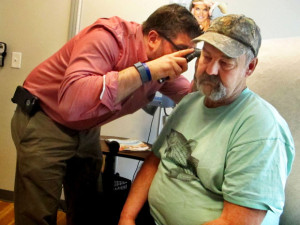
Thank you to Martha Bebinger from WBUR for interviewing me and publishing this great piece today on Gold Direct Care and how Direct Primary Care in general can work to improve the healthcare system as a whole. Also thank you to Mr. Bird who agreed to be interviewed that day while he was here. To reinforce why I feel the arguments against Direct Primary Care presented in the article today are weak at best:
1. DPC worsens the primary care shortage:
I ask these questions in response. What is the current system doing to fix it? Bogging down primary care doctors with more paperwork and more patients to see a day? “Value-base payments” that are based on how complex a physician “codes” their patient and visits rather than how complex the patient actually is as a human being?
By making primary care attractive to medical students from a professional and financial standpoint- including the ones I teach from Tufts Medical School- we can further supply this system with high quality, passionate students that want to do primary care for the right reason which is caring for patients. Most medical students graduate with around 150,000-250,000 dollars worth of debt. It is very challenging to offer them primary care as it currently is and currently pays. So lets fix that with Direct Primary Care.
2. DPC is “insurance”:
Without getting into legalities, the Affordable Care Act states in Section 1301 (a) (3) that Direct Primary Care combined with a catastrophic or high deductible insurance plan qualifies a patient as meeting the ACA standards of full “insurance”. However, having DPC alone would result in the patient paying the Obamacare fine. Therefore, it seems clear that DPC alone is not “insurance” or an “insurance-type product”. If you are interested in reading about this further please read this article by Dave Chase from Forbes. Mr. Chase is a great proponent of Direct Primary Care and very knowledgable on the topic.